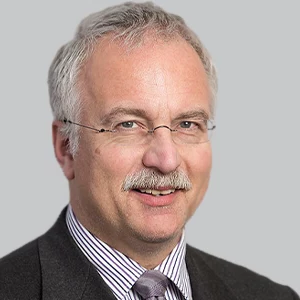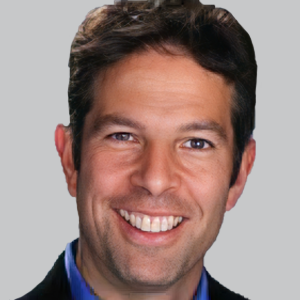Article
NeurologyLive® Year in Review 2022: Most-Watched Neuromuscular Disorder Expert Interviews
Author(s):
These were the most-watched interviews with experts in neuromuscular disorders that we conducted in 2022, brought to you as part of NeurologyLive®'s Year in Review.

The NeurologyLive® team spoke with hundreds of experts across the field of neurology, culminating in hundreds of hours of interview clips posted over the course of this year. The staff spoke with neurologists, investigators, advanced practice providers, physical therapists, advocates, patients, pharmacists, and industry experts—anyone involved in the process of delivering clinical care.
These conversations were had with individuals from all over the world, both virtually and in person. The team attended more than 10 annual meetings of medical societies, each and every time sitting down with experts on-site to learn more about the conversations driving care and the challenges being overcome.
From those in the field of neuromuscular disorders this year, we learned much about the current state of amyotrophic lateral sclerosis—which, in part because of a new approval, dominated much of the news—and the latest in genetic medicine advances for rare disorders. This year provided massive steps forward in the development of new therapies for rare disorders of neuromuscular origin and has set in place strong momentum headed into a new year.
Here, we'll highlight the most-viewed expert interviews on NeurologyLive® this year. Click the buttons to watch more of our conversations with these experts.

1. Overcoming the Complexities With Gene Therapy in ALS: Anna Underhill, BS
The postdoctoral researcher at King’s College London provided background on why gene therapies have not seen as much success in treating ALS, and the need for additional validation of genetic mutations. WATCH TIME: 3 minutes
"One of the things is difficulty accessing the brain cord, the brain and spinal cord. Any treatment that you have has to get into the spaces where the cells are so they can actually help. For ALS, at the moment, there’s a small number of targets that we can target therapeutically at the moment, which is why we need this research into ALS proteins that could also be used as potential targets."

2. Progression of New Treatments for Duchenne Muscular Dystrophy: Emma Ciafaloni, MD
The professor of Neurology and Pediatrics at University of Rochester Medical Center discusses the progression of new treatments for Duchenne muscular dystrophy and provides suggestions for moving forward with research in the field. WATCH TIME: 5 minutes
“We don't want to sit and relax on the successes; we have to use those successes as a stepping stone to move forward. We can always do better, as long as there is an exchange of lessons learned across scientists and clinicians and the field. I think that the field will definitely move in the best possible direction, I have no doubt we're definitely going forward not backward.”

3. Breakthrough in ALS With FDA Approval of AMX0035: Lawrence Steinman, MD
The Zimmermann Professor of Neurology and Neurological Sciences and Pediatrics at Stanford University discusses Amylyx’s therapy that was recently approved by the FDA, and what it means for the ALS community and the global healthcare industry. WATCH TIME: 5 minutes
“I think there is a very intelligent and strategic policy at the FDA to give a so-called expedited approval, conditional upon actually doing a phase 3 [trial], but in the meantime, it's available to patients. I think that's the most important thing.”

4. ALS Prevention as a Realistic Possibility: Calaneet Balas, MSc, MBA
The president and chief executive officer of The ALS Association discussed how prevention is being talked about in the ALS community and why it’s no longer a far-off reality. WATCH TIME: 4 minutes
"We’re starting to understand some of the genetic issues we see that might create a cause effect. If we can understand the cause and what might happen, can we create policies in which people are informed they might be at greater risk? They might be informed about whether participating in a certain sport [may have an impact]. We know that our veterans are twice as likely to get ALS as opposed to the general population."

5. CNM-Au8 Data From the RESCUE-ALS Open-Label Extension: Matthew Kiernan, MBBS, PhD, DSc, FRACP, FAHMS
The Bushell Chair of Neurology at the University of Sydney shared his insight into the latest data on CNM-Au8 as a potential treatment for amyotrophic lateral sclerosis and the frameshift in treatment that it represents. WATCH TIME: 3 minutes
“Importantly, though, linked to improved survival [was that] patients reported improved quality of life, and that was quite dramatic. There are less events per patient, less complications, more survival, and less deaths on the active compound, nanocrystalline gold. Really, this is quite a dramatic finding in ALS patients.”

6. The Revolution in Limb-Girdle Muscular Dystrophy With Gene Therapies: Nicholas E. Johnson, MD, MSci
The division chief of neuromuscular disorders and vice-chair of research at Virginia Commonwealth University offered his insight into the advances in genetic approaches to LGMD. WATCH TIME: 2 minutes
“It’s not without challenges, though. When you think about the big picture of limb-girdle muscular dystrophies, there are at least 26 or 27 forms that are suitable for gene replacement therapy, and it’s going to be fine to do the first 5 or 6 because they’re commercially viable strategies. How do we get ultra-rare patients—who would benefit from that gene replacement therapy—access to that therapy when it’s not commercially viable?”

7. Unique Composition of CNM-Au8 to Treat MS and ALS: Michael Hotchkin
The chief development officer at Clene Nanomedicine provided insight on why CNM-Au8, an investigational agent in development, has shown positive results across both multiple sclerosis and ALS. WATCH TIME: 2 minutes
"It is fascinating how many different neurodegenerative disorders share a commonality of energetic dysfunction. We do have preclinical models suggesting efficacy across a variety of different neurodegenerative diseases: MS, ALS, Alzheimer disease, and multiple other models."

8. Future Thoughts and Reason for Excitement in ALS: Timothy Miller, MD, PhD
The codirector of the ALS Center at Washington University School of Medicine detailed the reasons for hope within the ALS space and the promising innovations in the coming future. WATCH TIME: 4 minutes
"These trials don’t go without huge input and commitment from the participants and of course, their caregivers, and the clinical trial sites. I have the privilege of speaking to you about the trial as the lead author of this paper, but this is a team effort and includes a large group of people from multiple different organizations and the participants."

9. The Benefits of a New Therapy for Pompe Disease: Tahseen Mozaffar, MD, FAAN
On Rare Disease Day, the director of the Division of Neuromuscular Diseases at UC Irvine commented on the potential of AT845 for this patient population. WATCH TIME: 3 minutes
“The biggest advantage here would be that, rather than being dependent on an exogenously delivered enzyme that has to be given every 2 weeks with a significant amount of infusion-related reaction, plus a time commitment—because the infusion takes about 4 hours—you would be in a situation where your body is producing its own enzyme, either in the liver or in the muscle.”

10. Changes in Practice, Perspective on Developmental Milestones for Children: Paul Lipkin, MD
The director of medical outpatient services at the Kennedy Krieger Institute provided insight on how clinicians have typically assessed children who fail to meet milestones, and how that might change with new guidelines. WATCH TIME: 3 minutes
"While parents were having concerns, the professional didn’t have a good foundation to steer them towards the next steps in the process. That next step in the process ends up being really critical for the healthcare professional, for the child neurologist, and for the specialty pediatrician, because that means that will begin a cascade of further interventions, further evaluations, [and] further treatments in one way or another."






